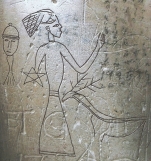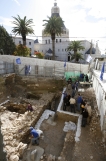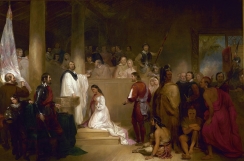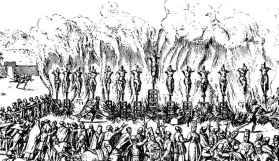The remains of at least 50 individuals, all believed to have lived through the events of 1066, have been discovered in Westminster Abbey, along with the skeleton of a three-year-old child.
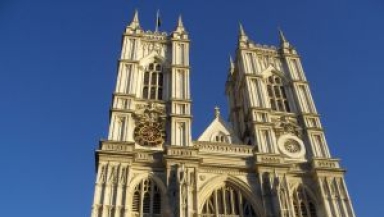
The bones were found buried under a Victorian drainage pipe just by the Poet's Corner.
The child is thought to be of some status, since the skeleton was found in a wooden coffin, unlike some of the monks found nearby.
"What the child is doing there is one of the many unanswered questions," archaeologist Warwick Rodwell told the Guardian, "but it is a feature of many ecclesiastical sites that you find the remains of women and children in places where you might not quite expect them."
Little is yet known of the poorly preserved skeleton, but future scientific tests hope to discover more details.
The remains were found by archaeologists after a 1950s lavatory block was demolished in preparation for a new tower being built.

Many of the bones were found under Victorian drainage pipes, where they had been moved during the construction of Westminster Abbey. Henry III commissioned the great new abbey, costing him the then princely sum of £45,000.
The skeletons would were removed from their original location when Henry demolished Edward the Confessor's church and reburied in a layer under the surface of what was then a masons' yard.
Some of the skeletons found in graves were identified as from the late Anglo-Saxon or early Norman period as their graves resembled methods of that time, lined with chalk blocks. Despite the protection of the chalk, the skeletons were badly decayed by water damage from the Victorian pipes.
The dating of the skeletons to around 1066 raises interest as there are many unanswered questions surrounding the abbey from that period, when one king was buried and two were crowned.










